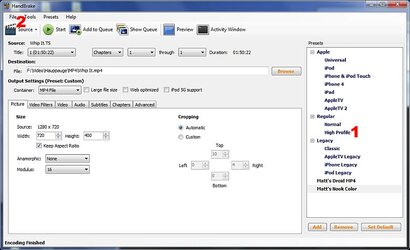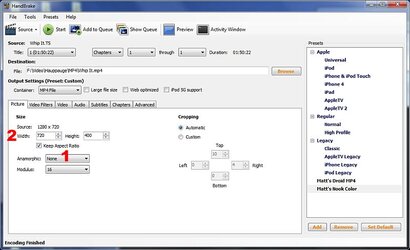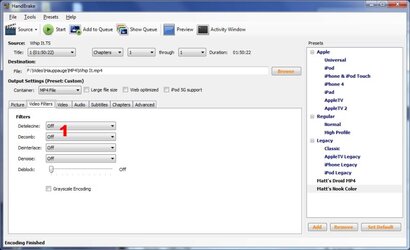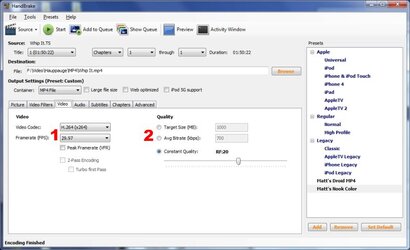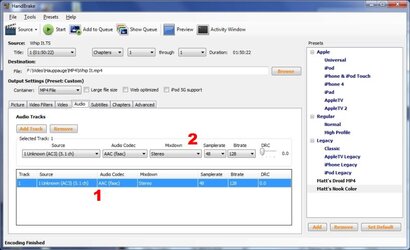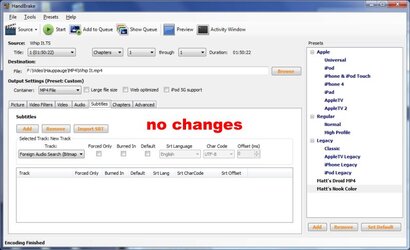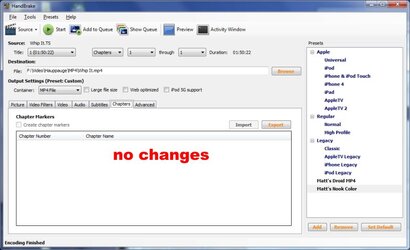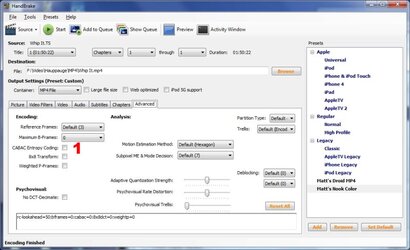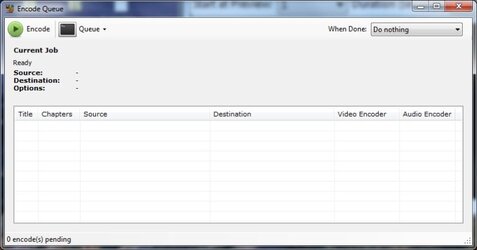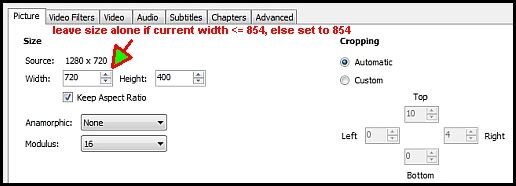- Sep 22, 2010
- 1,256
- 81
After spending a week experimenting with different video conversion programs, I've FINALLY found a solution that works well on the Nook Color (NC)!  Hopefully the time and effort will benefit others. I'm breaking down the how-to into three parts:
Hopefully the time and effort will benefit others. I'm breaking down the how-to into three parts:
Part 1: a super-quick list of the essential steps, for those who want to "git 'er done."
Part 2: a slower walk-through with screen-shots and detailed explanations
Part 3: reserved space for footnotes, finer details, corrections, etc.
*****************************************************************
Part 1 - A Quick Overview
Before beginning, I want to note that I stand on the shoulders of giants. There are at least three good discussions going on about effective ways to convert video for the NC:
Nook Color preset for Handbrake - xda-developers
HandBrake • View topic - B&N Nook settings
color Nook Color: Can't Play sideloaded m4v videos - MobileRead Forums
So now I want to stress two things (PLEASE READ): first, the steps that I outline here were developed to help me deal with a particular situation, which was to convert HD-video (720p) into a format that plays well on the NC. I will note in Part 2 where you may be starting with a different video source (e.g., a DVD rip), and your options. Second, if you spend some time visiting and reading the threads I've linked above, you'll notice variation in how various users configure Handbrake. I encourage you to experiment and see what works best for you. Again, Part 2 highlights some of the relevant options.
Okay! Now on to the quick overview.
Download Links (all freeware!):
Handbrake: HandBrake
VLC (optional): VideoLAN - VLC media player - Open Source Multimedia Framework and Player
MediaInfo (optional): MediaInfo
(1) Download and install Handbrake, a free video-conversion program: HandBrake The how-to is based on version 0.9.5, which was recently released. It's available for Mac, Windows, and Linux.
(1a) If you want the option to preview video before converting, download VLC, a versatile and easy-to-use video player: VideoLAN - VLC media player - Open Source Multimedia Framework and Player You can also use Quicktime.
(2) Run Handbrake. My screenshots and instructions are for the Windows version.
(3) On the Presets window, select High Profile.
(4) Click on the Source button, and load the video file you want to convert.
(5) Click the Browse, and select a destination and file name for the MP4 video file you will create.
(6) Go to the Picture tab. Set the Anamorphic menu to None. Enter 720 in the Width box, and check the Keep Aspect Ratio button. The Height should automatically adjust.
(7) Go to the Video Filters tab. Set Detelecine and Decomb to Off.
(8) Go to the Video tab. If you are using DVD source video, or standard resolution video, leave the Framerate option as Same as source. If your source is HD video (60fps), change the Framerate to 29.97.
(9) Go to the Audio tab. How many tracks appear? The goal is to end up with one track with an Audio Codec that shows up as AAC (faac) or MP3 (lame). If there are others, right click and remove them. On the remaining track, set Mixdown to Stereo, Samplerate to 48, and Bitrate to 128.
(10) Skip the Subtitles and Chapters tabs.
(11) Go to the Advanced tab. Set Maximum B-Frames to 0, and uncheck the CABAC Entropy Coding, 8x8 Transform, and Weighted P-Frames options.
(12) If you are in a hurry, then PRESS START! When it starts, Handbrake will give you an estimate of the encoding time. When done, copy the converted video over to your NC (either internal memory or sdcard will work) and give it a try! Otherwise, if you're the slow, cautious type, press the Preview button (at the top) and watch a quick sample before tying up your computer for an hour or two.
-Matt
Part 1: a super-quick list of the essential steps, for those who want to "git 'er done."
Part 2: a slower walk-through with screen-shots and detailed explanations
Part 3: reserved space for footnotes, finer details, corrections, etc.
*****************************************************************
Part 1 - A Quick Overview
Before beginning, I want to note that I stand on the shoulders of giants. There are at least three good discussions going on about effective ways to convert video for the NC:
Nook Color preset for Handbrake - xda-developers
HandBrake • View topic - B&N Nook settings
color Nook Color: Can't Play sideloaded m4v videos - MobileRead Forums
So now I want to stress two things (PLEASE READ): first, the steps that I outline here were developed to help me deal with a particular situation, which was to convert HD-video (720p) into a format that plays well on the NC. I will note in Part 2 where you may be starting with a different video source (e.g., a DVD rip), and your options. Second, if you spend some time visiting and reading the threads I've linked above, you'll notice variation in how various users configure Handbrake. I encourage you to experiment and see what works best for you. Again, Part 2 highlights some of the relevant options.
Okay! Now on to the quick overview.
Download Links (all freeware!):
Handbrake: HandBrake
VLC (optional): VideoLAN - VLC media player - Open Source Multimedia Framework and Player
MediaInfo (optional): MediaInfo
(1) Download and install Handbrake, a free video-conversion program: HandBrake The how-to is based on version 0.9.5, which was recently released. It's available for Mac, Windows, and Linux.
(1a) If you want the option to preview video before converting, download VLC, a versatile and easy-to-use video player: VideoLAN - VLC media player - Open Source Multimedia Framework and Player You can also use Quicktime.
(2) Run Handbrake. My screenshots and instructions are for the Windows version.
(3) On the Presets window, select High Profile.
(4) Click on the Source button, and load the video file you want to convert.
(5) Click the Browse, and select a destination and file name for the MP4 video file you will create.
(6) Go to the Picture tab. Set the Anamorphic menu to None. Enter 720 in the Width box, and check the Keep Aspect Ratio button. The Height should automatically adjust.
(7) Go to the Video Filters tab. Set Detelecine and Decomb to Off.
(8) Go to the Video tab. If you are using DVD source video, or standard resolution video, leave the Framerate option as Same as source. If your source is HD video (60fps), change the Framerate to 29.97.
(9) Go to the Audio tab. How many tracks appear? The goal is to end up with one track with an Audio Codec that shows up as AAC (faac) or MP3 (lame). If there are others, right click and remove them. On the remaining track, set Mixdown to Stereo, Samplerate to 48, and Bitrate to 128.
(10) Skip the Subtitles and Chapters tabs.
(11) Go to the Advanced tab. Set Maximum B-Frames to 0, and uncheck the CABAC Entropy Coding, 8x8 Transform, and Weighted P-Frames options.
(12) If you are in a hurry, then PRESS START! When it starts, Handbrake will give you an estimate of the encoding time. When done, copy the converted video over to your NC (either internal memory or sdcard will work) and give it a try! Otherwise, if you're the slow, cautious type, press the Preview button (at the top) and watch a quick sample before tying up your computer for an hour or two.
-Matt
Last edited:

